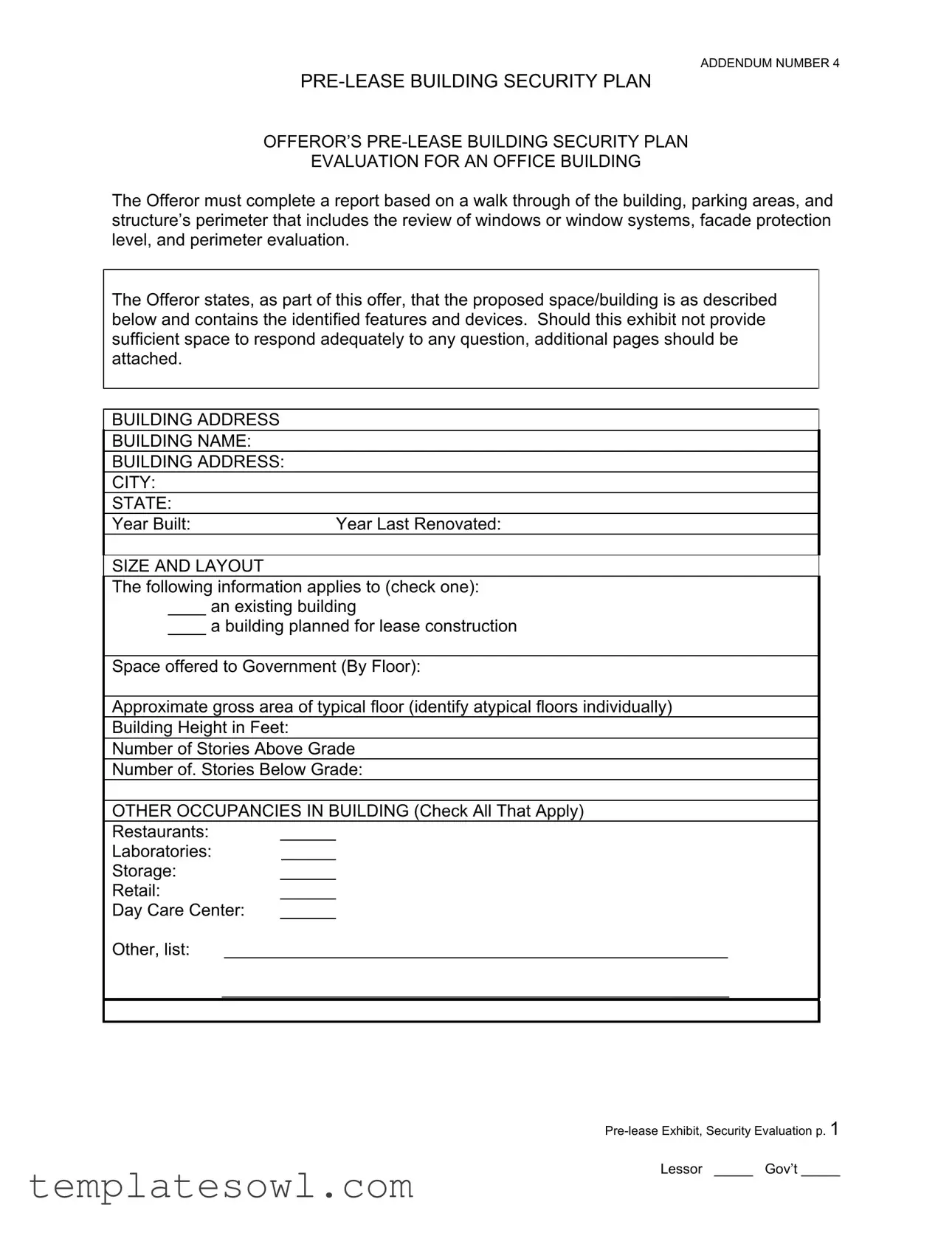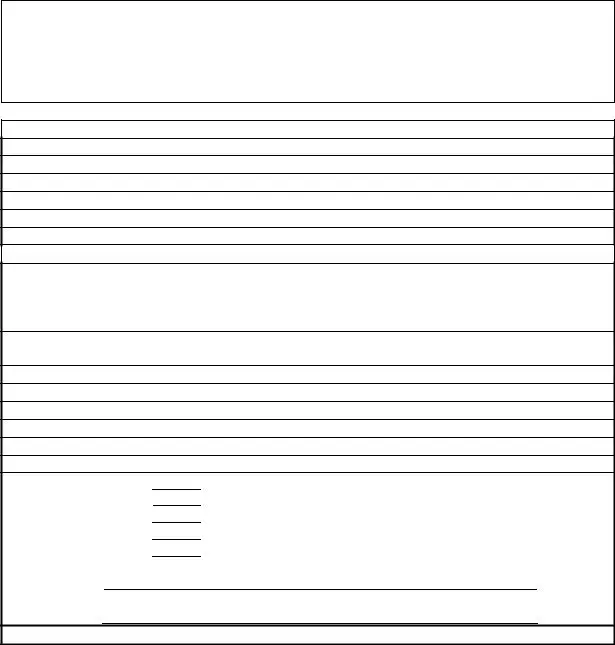What is the Building Security Plan form used for?
The Building Security Plan form is utilized to evaluate the security features of an office building prior to leasing. It requires an offeror to conduct a thorough walk-through of the building, including parking areas and the perimeter. The evaluation encompasses aspects such as window systems, facade protection levels, and general building security measures. Additionally, it collects essential data about building dimensions, materials, and emergency systems.
What specific information must be included in the Building Security Plan?
The Building Security Plan requires various pieces of information. This includes the building's address, size and layout, year built, and last renovated year. The offeror must document the approximate gross area of typical floors and the building’s height and number of stories. Additionally, the form asks for information on existing utilities and security measures for these utilities. Each question pertaining to security must be answered with "yes" or "no" and discussed accordingly.
Who is responsible for evaluating and completing the Building Security Plan?
The firm or individual designated as the offeror is responsible for completing the Building Security Plan. In certain cases, evaluations of window glazing and facade protection require certification by a registered Professional Engineer. This professional must provide their stamp and relevant license information along with accurate findings and recommendations.
Is there a requirement for physical documentation as part of the Building Security Plan?
Yes, the Building Security Plan requires the inclusion of digital photographs that provide a comprehensive view of the building, covering all sides and entrances. Additionally, a site sketch detailing the perimeter distances to surrounding streets and parking areas must be included. If the provided space on the form is insufficient for any responses, additional pages may be attached as necessary.
What should be done if deficiencies are discovered during the evaluation?
If deficiencies are noted in the evaluation, the Professional Engineer must document these findings clearly. The report should include recommended corrective actions and specific references to applicable code sections or security documents. If no deficiencies are identified, this should be explicitly stated in the report as well, ensuring that all results are transparent and comprehensive.




